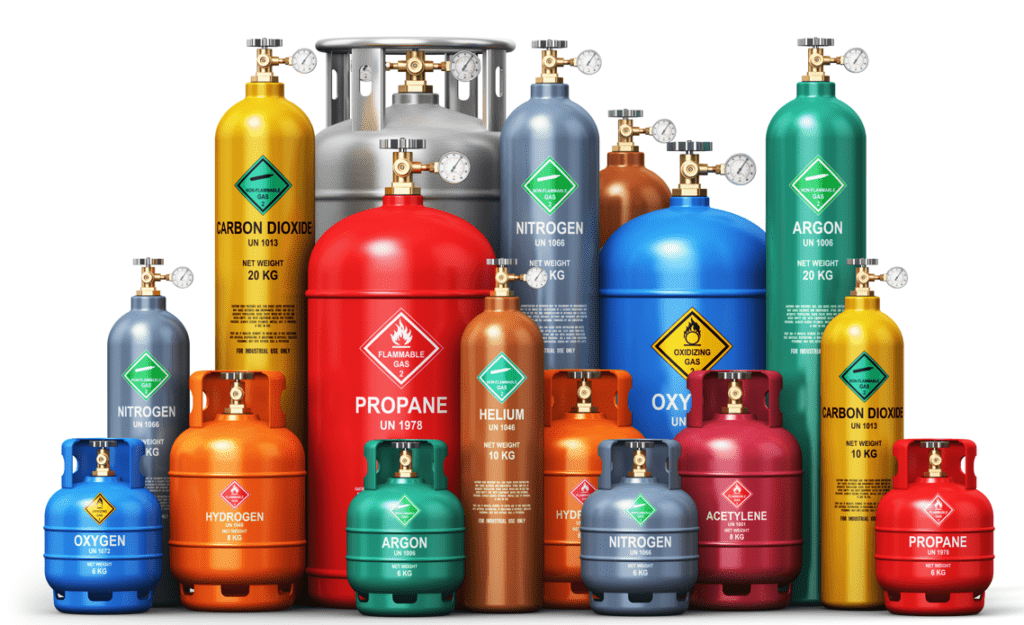I am extremely dangerous when mishandled. I have enough energy, when released, sufficient to propel myself three-quarters of a mile in height. I have the potential to become a rocket attaining a speed of over 30 miles per hour in a fraction of second. What am I?
I am a compressed gas cylinder.
Compressed gases can be toxic, flammable, corrosive, explosive, or inert. Toxic gases can result in a poisonous atmosphere, flammable and reactive gases can result in fires and explosions, and inert gases can quickly displace oxygen causing asphyxiation. If a cylinder falls or is knocked over, it can easily crush feet and cause property damage. If a neck of a pressurized cylinder should be broken off, the energy released would be sufficient to propel the cylinder to over three-quarters of a mile in height. A standard 250 cubic foot cylinder pressurized to 2,500 PSIG can launch like a rocket reaching a speed of over 30 miles per hour in a fraction of a second after venting from the broken cylinder connection.
It is important to understand the gas you are working with, how to safely handle, and store compressed gas cylinders – here are some of the general rules:
Identify the contents of the cylinder by reading its label, reviewing the corresponding safety data sheet (SDS), and protecting yourself with any necessary personal protective equipment (PPE). Visually inspect cylinders for leaks, bulging, defective valves, evidence of physical abuse, fire or heat damage, pitting, rusting or corrosion before each use. Remove damaged cylinders from use.
When moving a gas cylinder, keep it in an upright position, ask for help or use a cylinder cart. Never move or lift a cylinder by its protective valve cap. Never drop, roll, roughly handle or allow a cylinder to strike another violently. Remove regulators, close valves, and secure protective caps on cylinders prior to moving, unless secured on a cylinder cart.
Store cylinders upright in a well-ventilated area and properly secure to prevent tipping, falling, or rolling. Don’t store cylinders in area exposed to excessive temperature increases, physical damage, or tampering. Never store cylinders near exits, stairways, or in a means of egress. Always remove regulators and place valve protectors on gas cylinders when not in use. Separate oxygen containers from fuel-gas containers and combustible materials such as oil and grease, by a minimum distance of 20 feet, or by a noncombustible barrier. Noncombustible barriers must be at least 5 feet high having a fire-resistance rating of at least 30 minutes. Keep storage areas free from sources of ignition, and smoking/vaping is prohibited.
Always practice compressed gas cylinder safety and leave the rocket launches to Elon Musk.
Safety Always!
Vicki Dix



